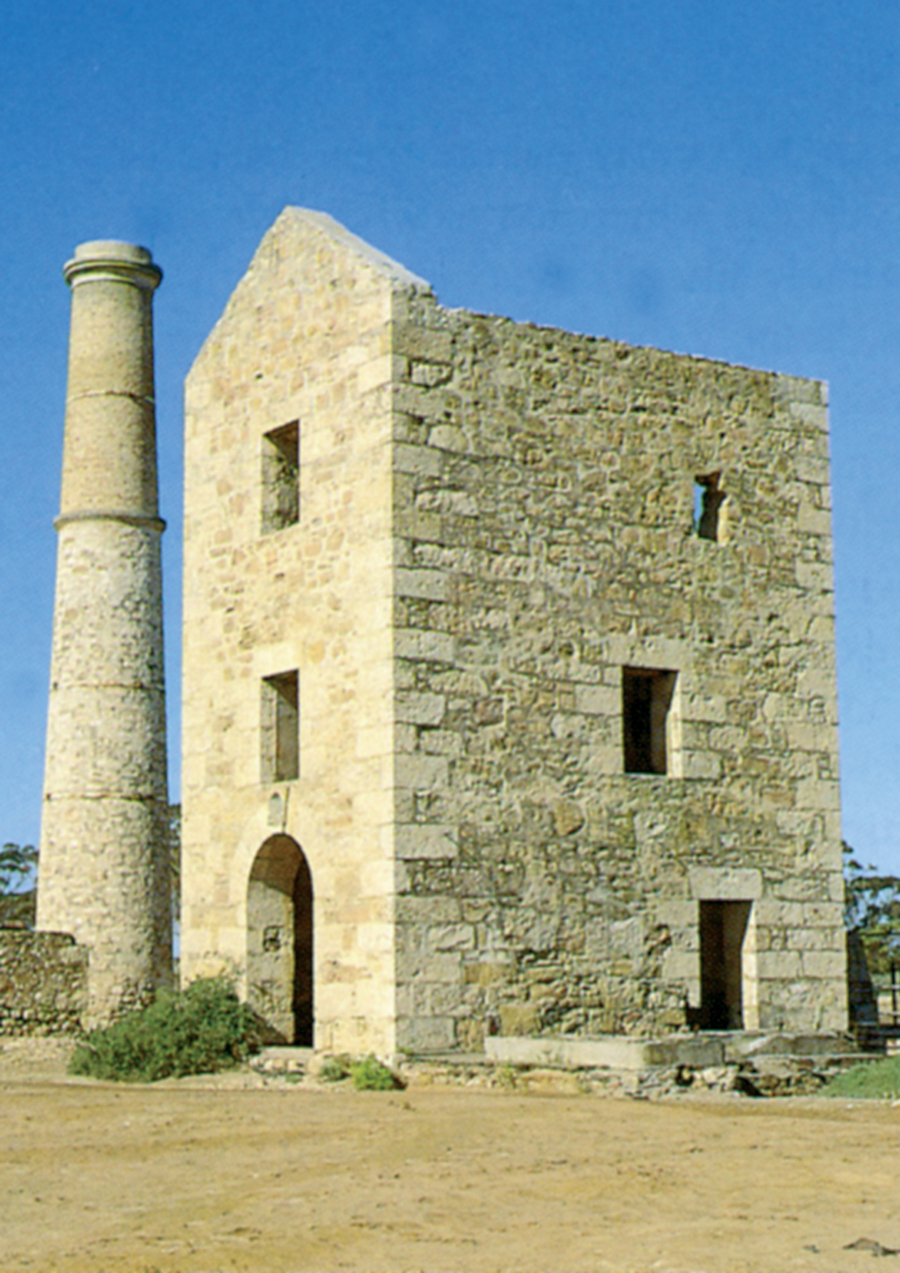Cornish Mining in Australia
Balweyth Kernewek yn Ostrali
Many Cornish migrants came to settle in Australia’s developing mining regions in the mid-19th century. Nearly half of all immigrants in South Australia by 1865 were Cornish. Cornish workers had a big impact not only on Australia’s mining industry but also on the culture we associate with the country today.
The Great Copper Boom
In 1841, Wheal Gawler at Glen Osmond became the first metal mine in Australia. Copper was then discovered in Kapunda and Burra, where mining began in 1844 and 1845 respectively. More settlers, including Cornish miners and their families, were drawn to Southern Australia to take part in the great copper boom and by 1850 the region had developed into the third largest copper producer in the world.
The Copper Triangle
In 1859 a shepherd discovered traces of copper in South Australia’s Yorke Peninsula. This prompted a rush for mining leases. Soon after, mines had been established in Moonta, Kadina and Wallaroo.
The area roughly bordered by these three towns became known as the Copper Triangle as a result.
Thanks to the Cornish settlers’ expertise and advanced machinery, the Copper Triangle flourished:
Moonta Mine was the first mine in Australia to pay one million pounds in dividends
Moonta contained the country’s second largest urban population behind Adelaide
The Moonta Company produced more than $10 million worth of copper
The Moonta-Wallaroo mines produced around 350,000 tonnes of copper – this was nearly half the total mineral production of South Australia up to 1924.
By 1865, Cornish settlers were thought to make up over 42% of South Australia’s immigrant population. Because of this, the Yorke Peninsula later became known as Australia’s “Little Cornwall” and by 1875 Moonta’s copper output had surpassed that of Cornwall.
Australia’s Little Cornwall
South Australia owes its global status as a copper region to Cornwall’s mining expertise and the area is proud of its Cornish connections to this day. Kernewek Lowender (Cornish for ‘Cornish happiness’) is a festival held every two years in the Copper Triangle to celebrate the region’s ties to Cornwall. It was established in 1973 and hosted 20,000 visitors in its first year. Typically the event brings around 30,000 participants to the region.
The festival comprises seven days’ worth of traditional Cornish-style celebrations, such as Furry Dancing and Maypole Performances. Traditional Cornish foods are also served and it claims to be the largest Cornish festival outside of Cornwall itself.
Cornwall’s legacy in Australia
Cornish mine workers brought with them to Australia much of the culture and many customs from their homeland. The game of rugby union was popularised there due to the Celtic nation’s passion for the sport. In 1908, a national side from Australia visited and played in Cornwall.
Today, around 10% of South Australia’s inhabitants are of Cornish descent. At least six of Australia’s Premiers have been of Cornish ancestry
The miners also brought Cornwall’s trademark dish over with them; Cornish Pasties were made popular in mining settlements in Australia and are still served in these areas.
Swanky Beer is a Cornish Australian beer that also used to be taken to the mines. The terms were bought from Cornish migrants and it is still brewed in the Yorke Peninsula today.

